Organizing Your Year: A Comprehensive Guide to the January 2025 Calendar in Excel
Organizing Your Year: A Comprehensive Guide to the January 2025 Calendar in Excel
Introduction
With great pleasure, we will explore the intriguing topic related to Organizing Your Year: A Comprehensive Guide to the January 2025 Calendar in Excel. Let’s weave interesting information and offer fresh perspectives to the readers.
Table of Content
Organizing Your Year: A Comprehensive Guide to the January 2025 Calendar in Excel
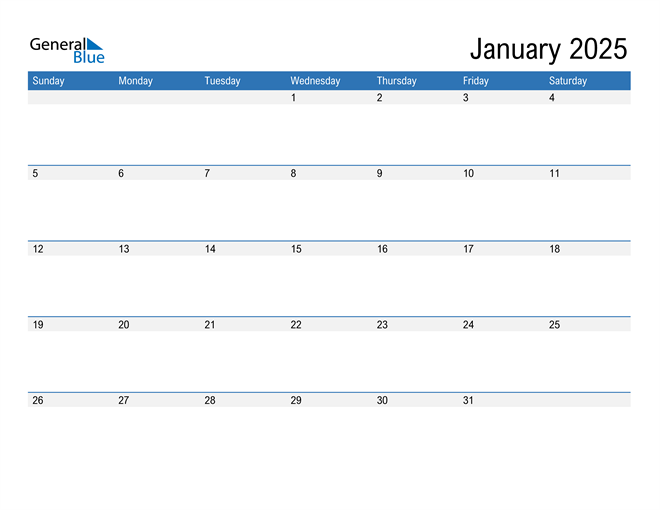
The start of a new year often brings a wave of renewed energy and a desire for organization. The January 2025 calendar, particularly when implemented in Microsoft Excel, becomes a powerful tool for planning, tracking, and maximizing productivity. This article delves into the benefits and functionalities of this digital calendar, providing a detailed guide for its effective utilization.
Understanding the Power of a Digital Calendar
A traditional paper calendar can be convenient, but a digital calendar, especially one built in Excel, offers a multitude of advantages. Excel provides a dynamic platform for:
- Customization: Adjusting the calendar’s appearance to suit individual needs, including color-coding, font choices, and cell formatting.
- Data Integration: Linking the calendar to other spreadsheets or data sources for seamless information management.
- Advanced Functionality: Leveraging Excel’s formulas and functions for automated tasks like reminders, deadlines, and event calculations.
- Accessibility: Accessing the calendar from any device with an internet connection, ensuring constant access and synchronization.
Building Your January 2025 Calendar in Excel
Creating a January 2025 calendar in Excel is a straightforward process:
- Start with a Template: Numerous pre-built calendar templates are available online or within Excel itself. These templates provide a structured foundation for your calendar.
- Adjust Dates: Ensure the calendar accurately reflects the days and weeks of January 2025.
- Add Important Dates: Input significant events, deadlines, holidays, and appointments.
- Color-Coding: Utilize different colors to categorize events, prioritize tasks, or visually distinguish between personal and professional engagements.
- Formulas and Functions: Integrate Excel’s formulas and functions to automate tasks. For example, use conditional formatting to highlight important dates or calculate time differences between events.
Beyond the Basic Calendar: Maximizing Functionality
The January 2025 calendar in Excel can be much more than a simple date tracker. Here are some advanced features to consider:
- Task Management: Create separate columns or worksheets for task lists, enabling you to assign deadlines, track progress, and prioritize tasks.
- Budgeting: Integrate a budget tracker into the calendar to monitor spending, track income, and visualize financial goals.
- Goal Setting: Establish a dedicated section for outlining personal and professional goals, aligning them with specific dates or timeframes.
- Meeting Scheduling: Use the calendar to schedule meetings, assign attendees, and set reminders for preparation.
- Project Management: Create a visual timeline for projects, assigning tasks to specific dates and tracking their progress.
FAQs about January 2025 Calendar in Excel
1. What are some useful formulas for the January 2025 calendar?
- DATE(year, month, day): Calculates a specific date.
- WEEKDAY(date): Determines the day of the week for a given date.
- TODAY(): Returns the current date.
- NETWORKDAYS(start_date, end_date, [holidays]): Calculates the number of working days between two dates, excluding weekends and optional holidays.
2. Can I share the January 2025 calendar with others?
Yes, you can share the calendar using various methods:
- Email: Send the file as an attachment.
- Cloud Storage: Upload the calendar to cloud storage services like Google Drive or Dropbox.
- Online Collaboration Tools: Use platforms like Google Sheets or Microsoft Teams to collaborate on the calendar in real-time.
3. How can I ensure the calendar is always up-to-date?
- Automatic Updates: Enable automatic updates for the calendar to reflect changes in real-time.
- Regular Synchronization: Set reminders to manually update the calendar with new information.
- Version Control: Maintain a consistent versioning system to track changes and revert to previous versions if needed.
Tips for Optimizing Your January 2025 Calendar
- Regular Review: Schedule time to review the calendar weekly or monthly to ensure accuracy and make necessary adjustments.
- Prioritize Tasks: Utilize color-coding or other visual cues to highlight important tasks and deadlines.
- Limit Distractions: Minimize distractions during calendar review sessions to maintain focus.
- Back Up Data: Regularly back up your calendar to avoid losing data.
Conclusion
The January 2025 calendar in Excel serves as a powerful tool for organization, planning, and productivity. By harnessing its customization options, advanced functionality, and integration capabilities, individuals and teams can streamline their schedules, manage tasks effectively, and achieve their goals. The key to maximizing its benefits lies in consistent utilization, regular updates, and a proactive approach to planning and task management. As you embark on the new year, the January 2025 calendar in Excel can be your trusted companion, helping you stay organized, focused, and on track towards success.
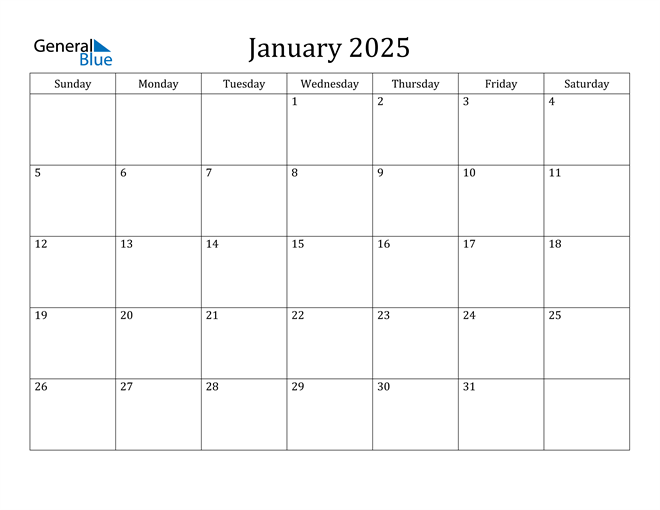
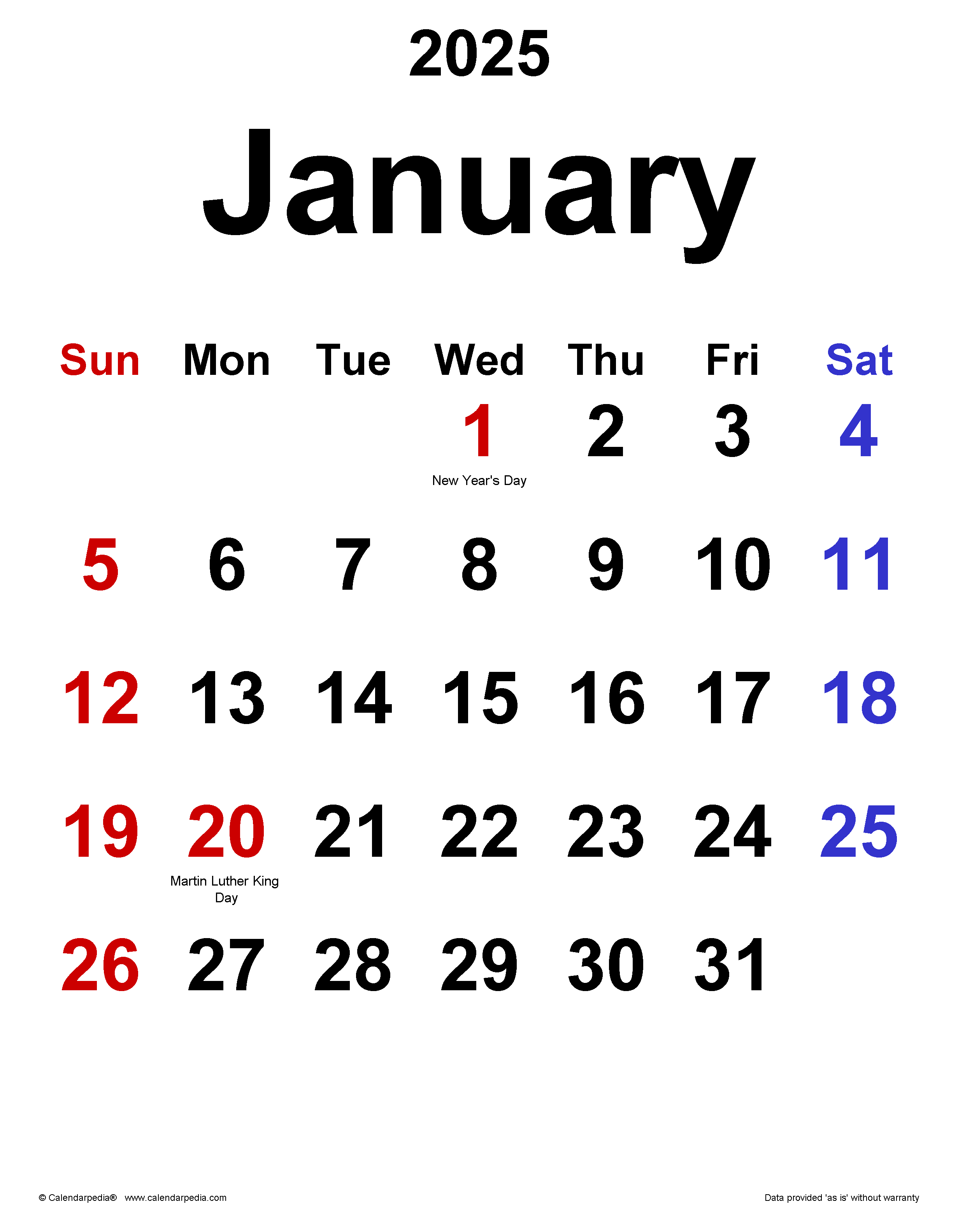
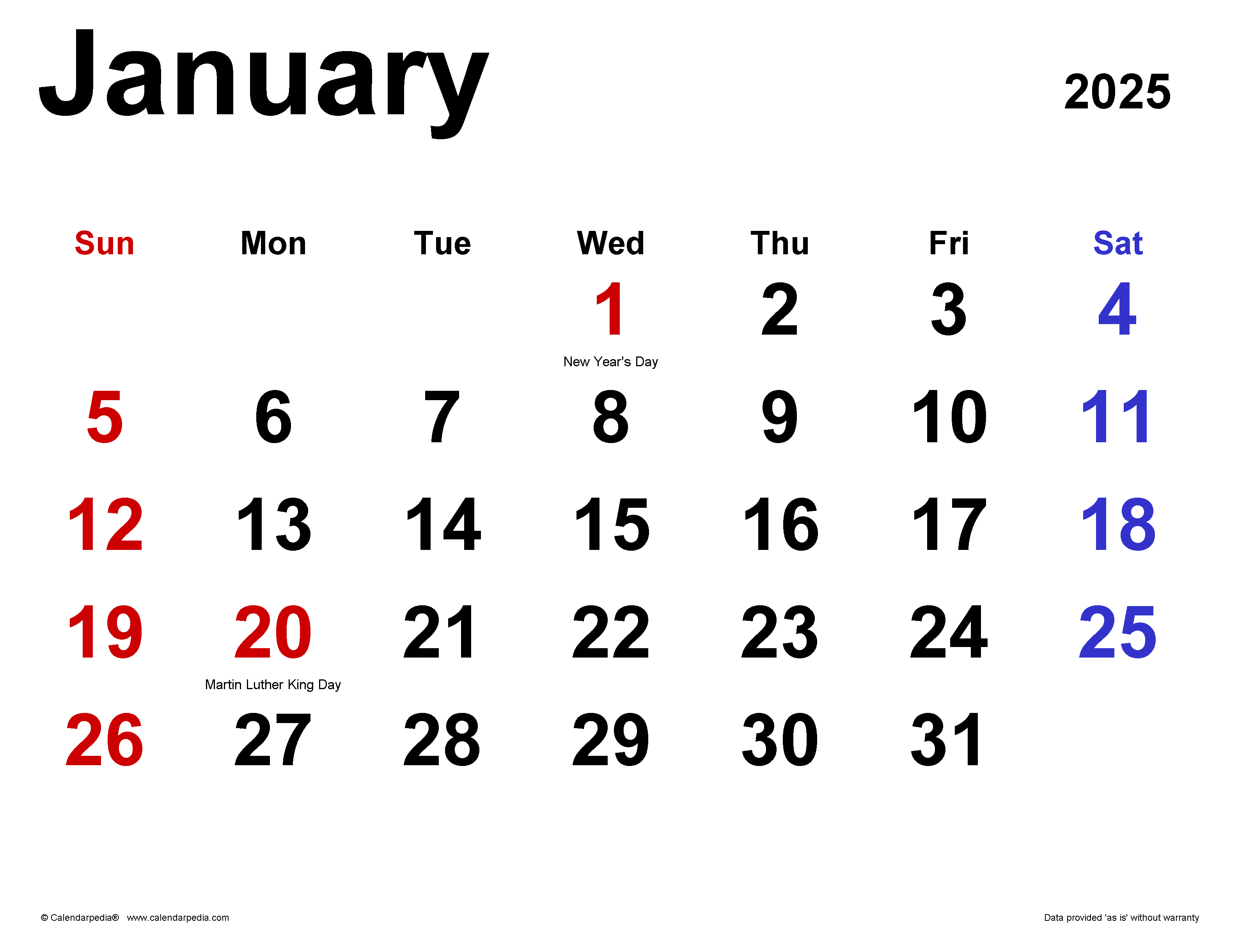
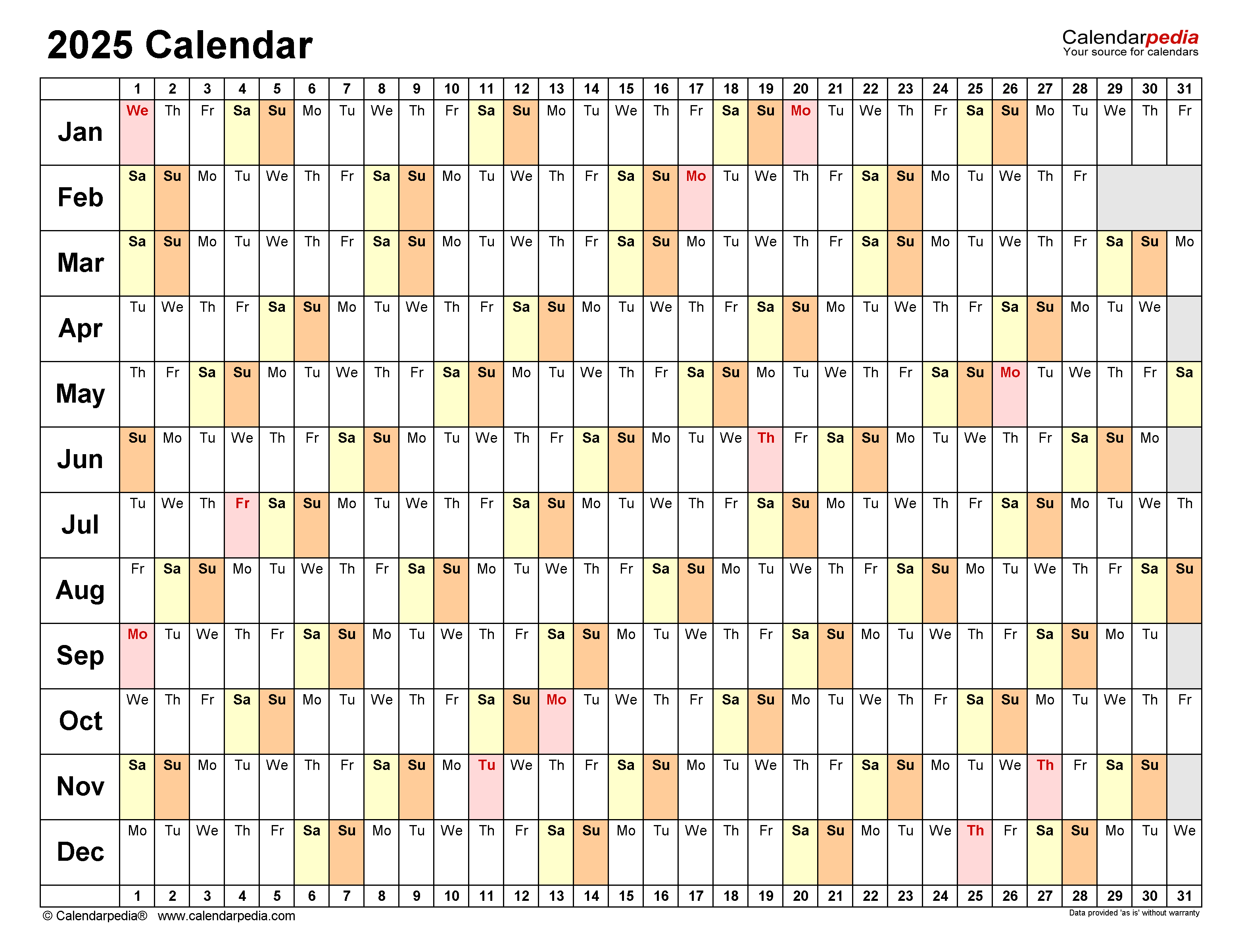
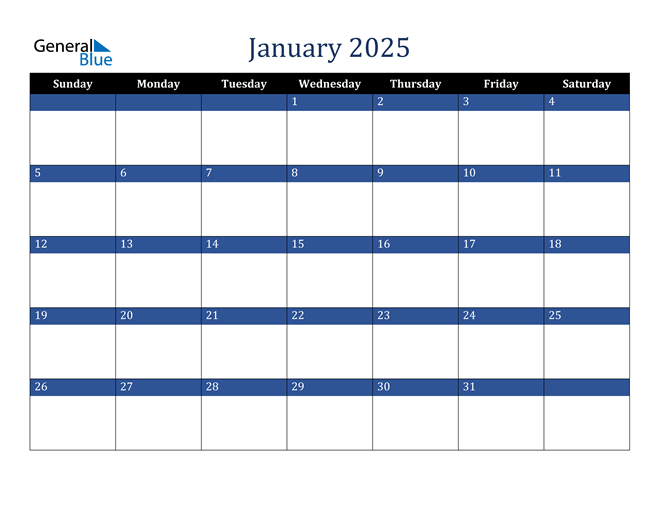
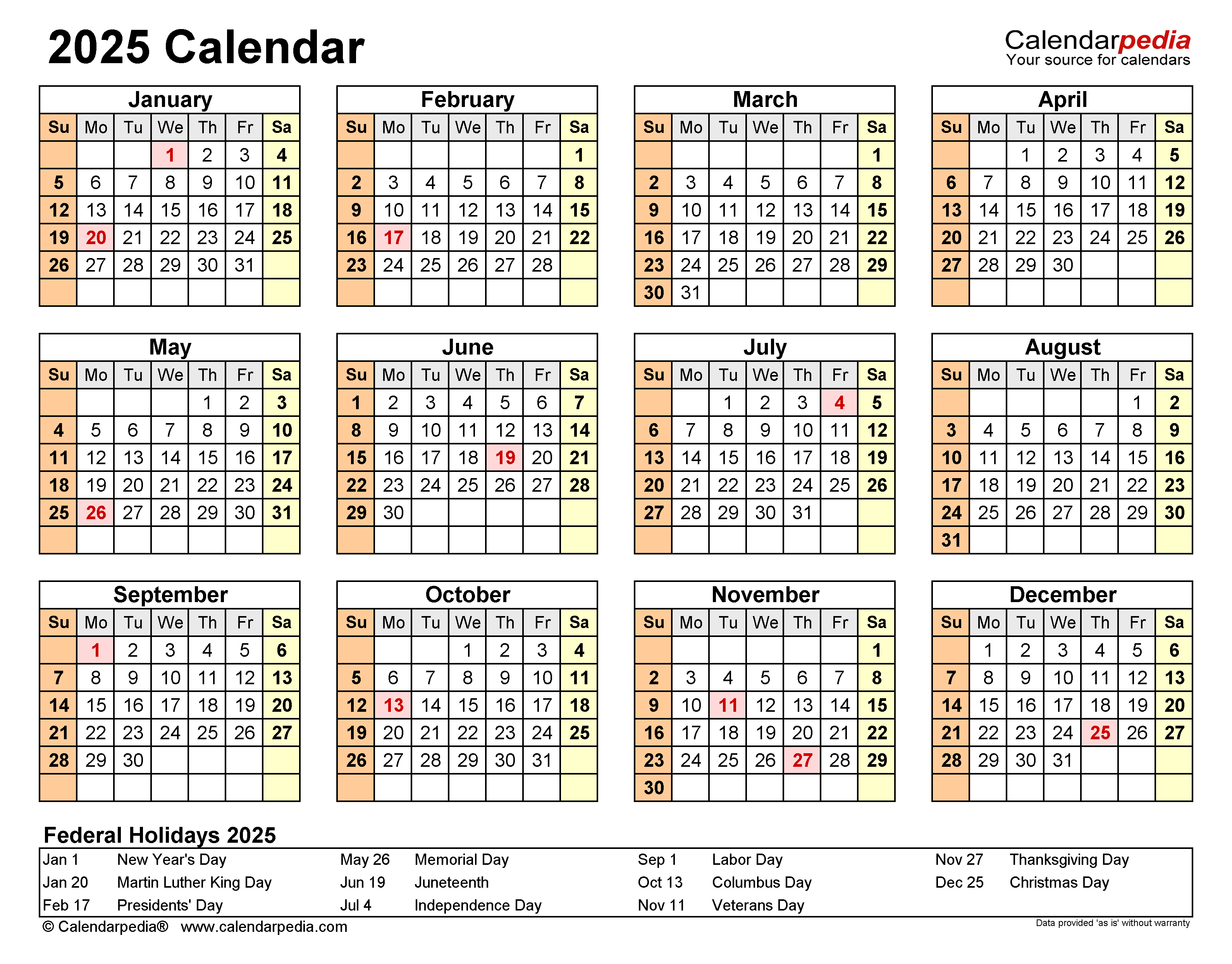
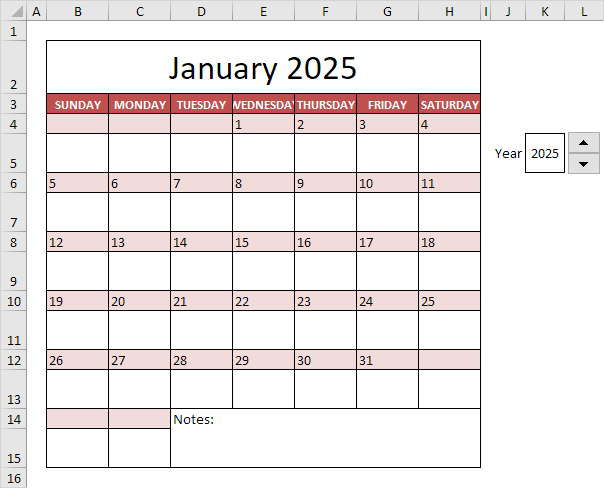
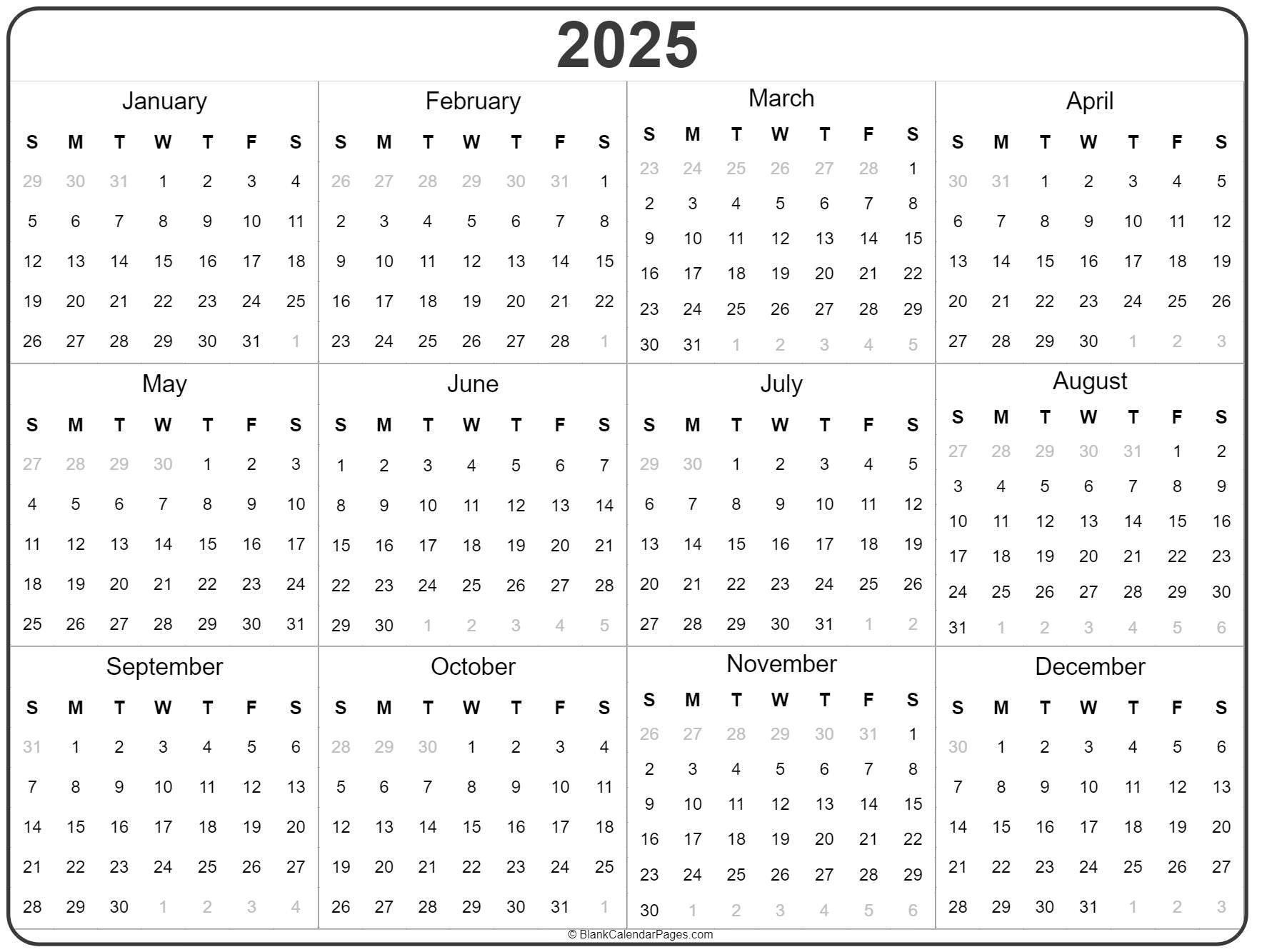
Closure
Thus, we hope this article has provided valuable insights into Organizing Your Year: A Comprehensive Guide to the January 2025 Calendar in Excel. We appreciate your attention to our article. See you in our next article!